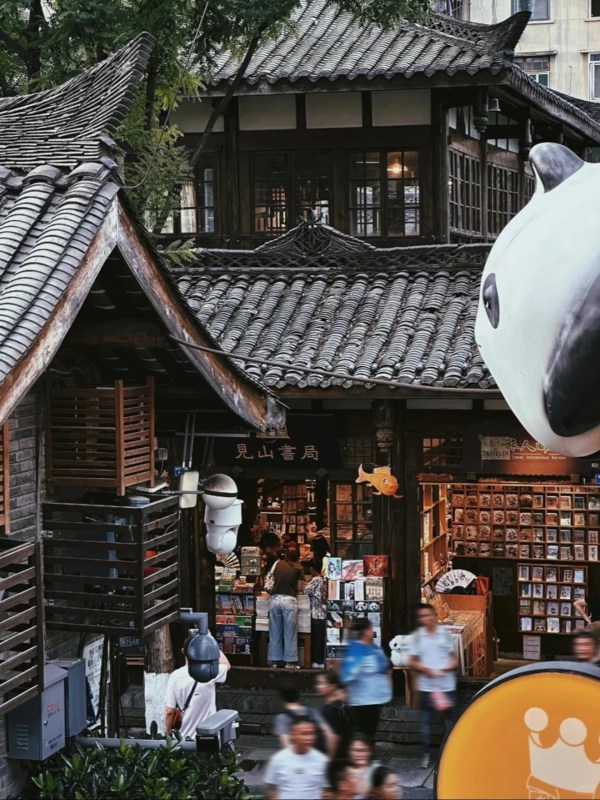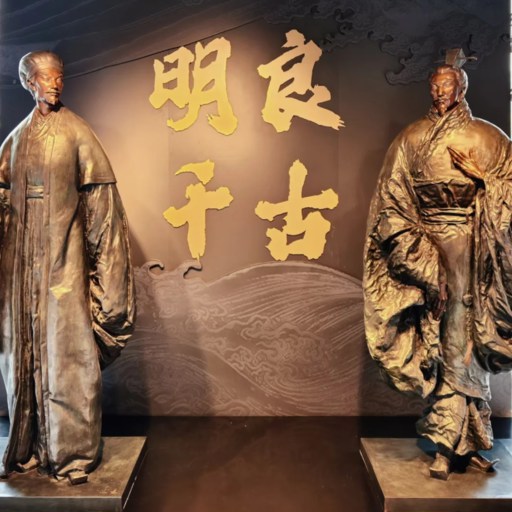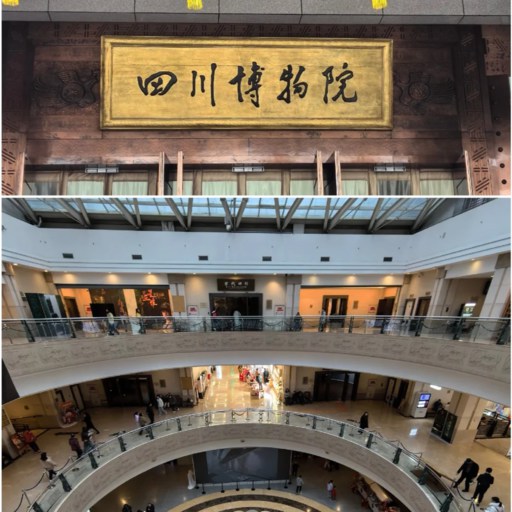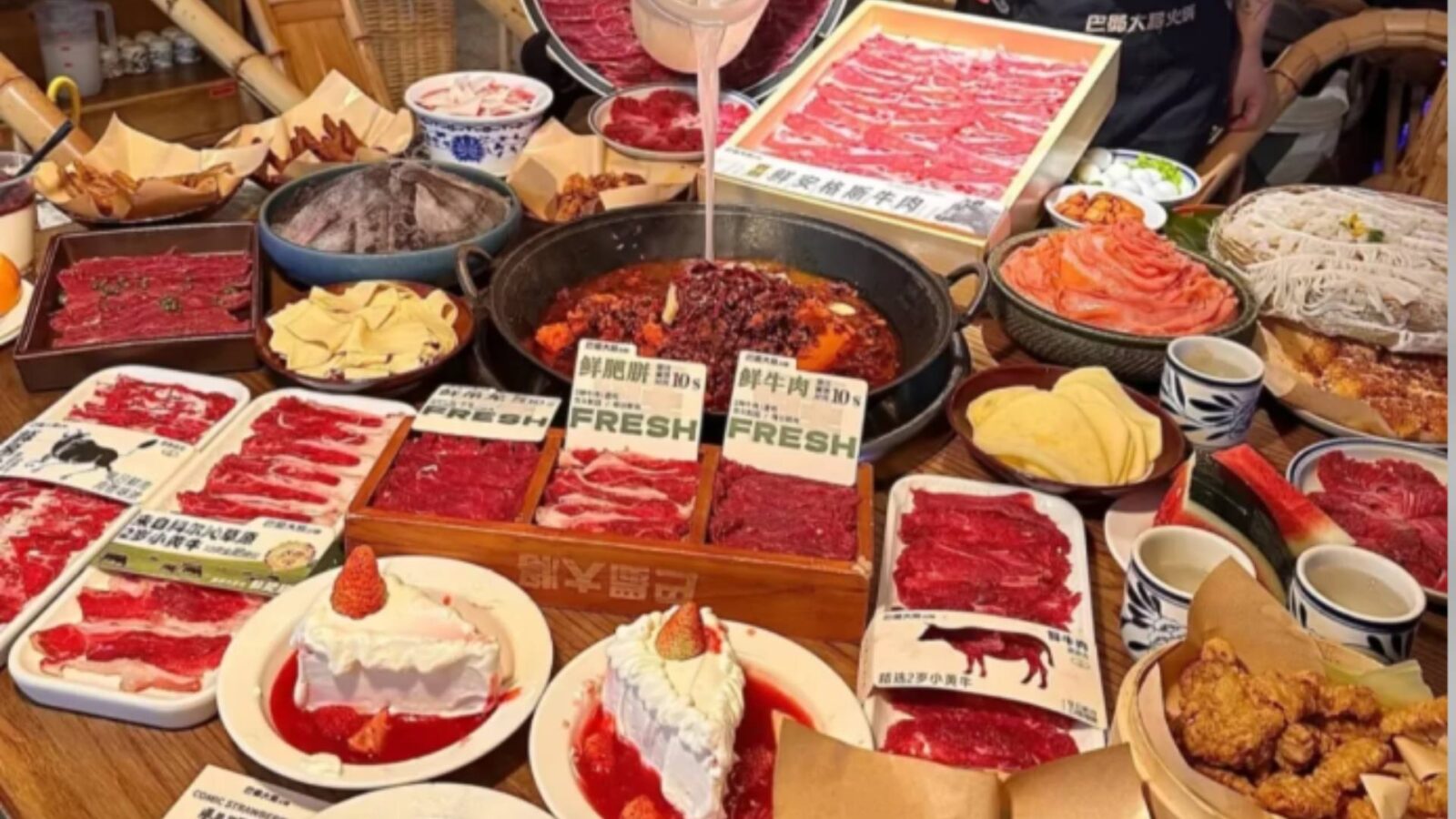
Chengdu Hotpot
Chengdu Hotpot hailed from the dock workers of the Ming-Qing dynasties who, short of money, boiled up inexpensive beef offal (stomachs, intestines) in a cast iron pot with chillies and powdery hot sichuan pepper. This humble one-pot stew became the Jingchenghuan’s distinctive artistic temperament: pungent flavors, everyone eating in together and the simple transformation of every ingredient into gold. That spirit lives on now in bottles of beef tallow bouillon every bit as thick as the original, and in “seven up, eight down” tripe. This guide selects 5 Chengdu hotpot restaurants to help you make the right choice from a zillion possibilities, including those popular with both locals and foreigners.
To help you pick from Chengdu's countless hotpot spots, we've handpicked 5 standouts loved by both locals and travelers! Here you'll find: a heritage gem in Taikoo Li with cultural recognition, a fun Kuanzhai Alley spot with Sichuan opera, an elegant south Chengdu banquet choice, a no-frills local favorite focused on fresh ingredients, and a unique fish hotpot spot blending seafood and Sichuan heat. We also cover practical bits—ordering tips for non-Chinese speakers, etiquette, Chengdu vs. Chaoshan hotpot, and FAQs like wait times. Whether you want authentic mala flavor, cultural vibes, or to avoid rookie mistakes, keep reading to find your perfect Chengdu hotpot spot!
Top 5 Chengdu Hotpot Restaurants (Local Picks & Traveler Favorites)
| Restaurant | Signature Dishes | Average Spending | Rating |
|---|---|---|---|
| Ba Shu Da Jiang Hotpot | Fresh-cut beef, crispy tripe, sweet fried rice balls | ¥90/person | ⭐️⭐️⭐️⭐️⭐️ |
| Kan Jian Lao Hotpot | Cold pot duck blood, fresh duck intestine, free fried rice | ¥77/person | ⭐️⭐️⭐️⭐️ |
| Jin Cheng Impression Hotpot | Premium beef tripe, fresh goose intestine, tender beef | ¥120/person | ⭐️⭐️⭐️ |
| Rong Sheng He Fresh Hotpot | Fresh sirloin slices, thick yellow throat, fresh duck blood | ¥95/person | ⭐️⭐️ |
| Youmingtang Fresh Fish Hotpot | Suobian fish, green pepper broth, crispy fried pork | ¥80/person | ⭐️ |
The recommendation star rating only applies to the five restaurants listed above, ranked in order of recommendation level.
Ba Shu Da Jiang Hotpot — A UNESCO-Recognized Legend in the Heart of Taikoo Li ⭐️⭐️⭐️⭐️⭐️
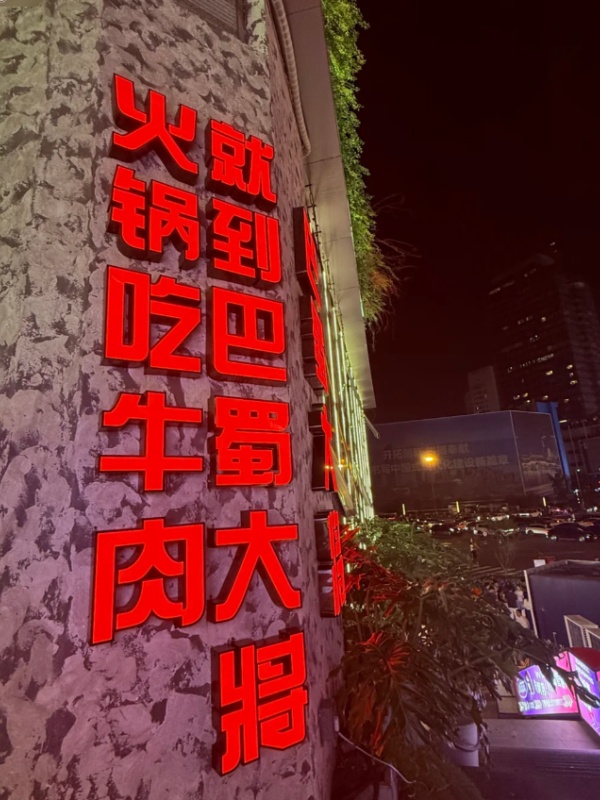
Ba Shu Da Jiang Hotpot
Renowned for its official inheritance of intangible cultural heritage, the genuine Chengdu trademark is called 巴蜀大将火锅 (Ba Shu Da Jiang Hotpot). Set within the lively Chunxi Road—Taikoo Li zone, it is far more than just a simple hotpot restaurant, but rather a cultural landmark. This is the spirit of Sichuan. The soup is made by mixing beef butter with just-boiled bone stock, producing this delicate balance in a little piquant taste of the same kind which typifies real Sichuan flavor. The restaurant's interior is a modern mixture of old Sichuan folk tiles and new elegance--combining both convention and modernity in one blend. A mixture of royal splendor and Sichuan folk style offers a kind of comfortable surroundings.
Signatures include: the fresh-cut beef, marbled and tender, which is sliced daily; the crispy tripe, cut thick and grainy for the "way up, way down three seconds" eating experience; and sweet fried rice balls (糖油果子)—crispy on the outside, soft on the inside, coated in scented brown sugar. Each mouthful is identifiable as part and parcel of Chengdu's cookery.
Average cost per person: about ¥90. The eatery is popular both with tourists on the Taikoo Li circuit of heritage food places after experiencing a feast of culture, as well as for those whose palates prefer bold flavors without burning their stomachs. The staff always serves with true honesty, advising on how to dip or place the bits of meat and at which times. This festive yet snug ambience lets you concentrate on the dining experience itself. The restaurant also occasionally hosts sessions of "Intangible Heritage Hotpot Culture Experience." Usually a line forms in the vicinity of an hour during peak periods (12 noon-2 p.m., 6 p.m.-8 p.m.) so reserving ahead online is recommended.
- Address: No. 88, Chunxi Road, Jinjiang District, Chengdu
- Phone: 028 - 12345678
Wondering what to do in Chengdu besides eating hotpot? 2025 Chengdu Travel Guide: Best Attractions and Things to Do in Chengdu has plenty of ideas for you.
Kan Jian Lao Hotpot — Opera and Spice Near Kuanzhai Alley ⭐️⭐️⭐️⭐️
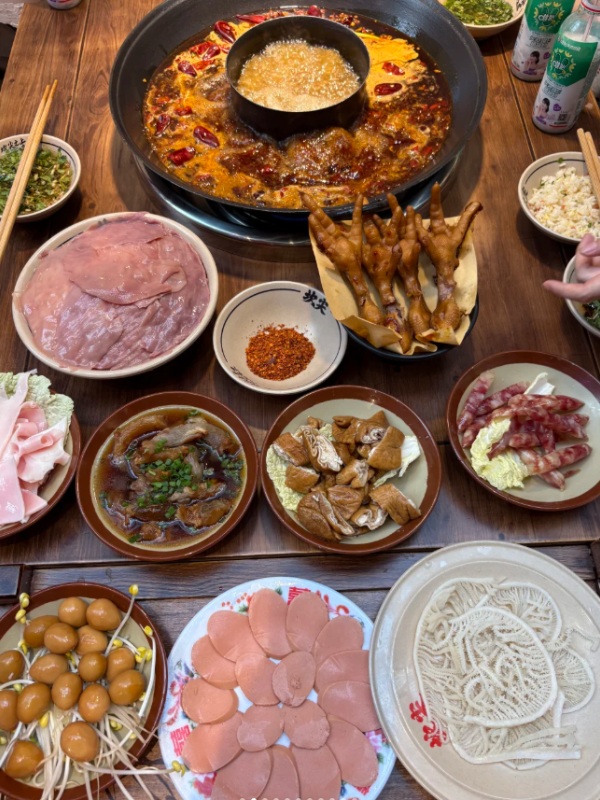
Kan Jian Lao Hotpot
坎尖老火锅 (Kan Jian Lao Hotpot) provides Chongqing-style spicy soup base and Sichuan chuan style in of the entire building is a great place to go! Just down the street from Kuanzhai Lane, Watermelon City has become increasingly popular with people after they have finished shopping. The traditional butter broth is rich and thick, yet it's the aroma of its spiciness that best symbolizes the Sifang Xinyu (Four New Breeds) culinary concept. Lantern-lit wooden tables stand in the open air, where people speaking both Mandarin and Chengdu dialect sit enjoying their meals and having a happy time.
Crowd favorites include the cold pot duck blood, which goes into the spicy broth to stew to tenderness and pop with flavors; fresh duck intestine is long, slightly crisp and finally just right when it comes out after being dipped for a few seconds; and the free fried rice locals call Duck a decoction that's fragrant golden yellow. Prices average ¥77 per person, making it a good deal for the quality and experience.
Live face-changing performances – an absolute must-see – are at 7:00 and 8:00 pm. Stage actors come into the dining space to change their masks, and these thin strips of painted wood suddenly become life-like faces: climbing around [the restaurant] is the red-skinned Monkey King who appears out of Sun Wukong's face. Every move seems to burst forth a new face. Waiting staff all behave in a most welcoming and professional manner, always ready to increase (or decrease) the amount of chilli, or bring more free-fried rice. For spicy food lovers and culture buffs, this is a place where you drop in. But on summer nights it can get hot inside, so you's better aim for a later sitting.
- Address: No. 56, Kuanzhai Alley, Qingyang District, Chengdu
- Phone: 028 - 87654321
If Chengdu’s iconic hotpot spots have you craving a different kind of authentic flavor, switch lanes with 6 Halal Restaurants in Beijing: Verified and Authentic Muslim-Friendly Dining.
Jin Cheng Impression Hotpot — A South Chengdu Classic for Banquets ⭐️⭐️⭐️
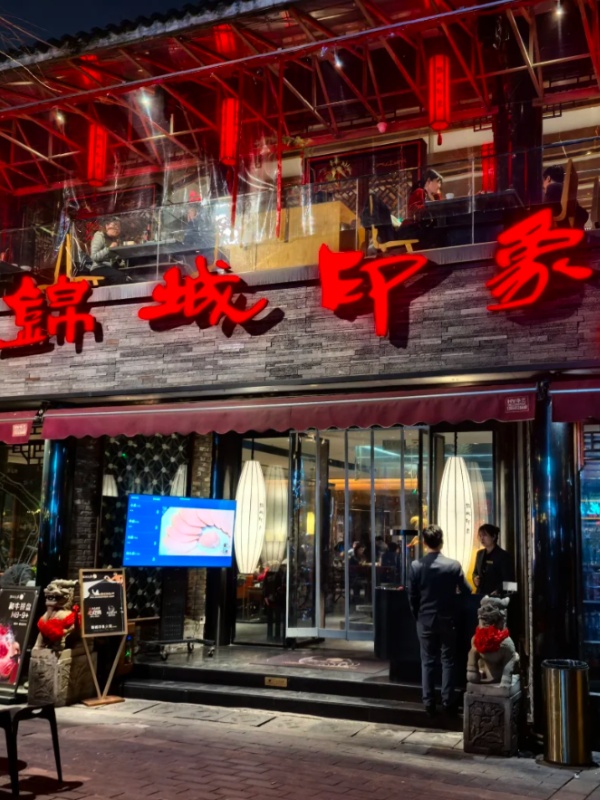
Jin Cheng Impression Hotpot
The Jin Cheng Impression Hotpot(锦城印象火锅) lies in Yulin Fangcao Street area and is a culinary tradition. At the south of Chengdu, a perennial favorite for family gatherings and business dinners. The atmosphere is elegant and quiet with private rooms for groups of friends to sit together over hot pot. The spicy yet mild broth is made from spices in the right proportion to give it a deep, rounded taste that does not assault your palate.
Menu 's musts are premium beef tripas, cleaned and prepared so as to be crunchy on the outside and fresh and smooth within; green goose intestines, gentle and reviving; house-made tender beef in small pieces that still remains tender even after boiling (very suitable for families or those who can't stand too much spiciness). The service is second to none: staff will help cook ingredients and suggest the perfect dipping sauce recipe.
Expect on average to pay about ¥120 per person. This is a place for people who are looking for refinement rather than novelty. Of course, there is not much revision on the menu; but owing to this strictness and attentiveness, every visit feels secure and satisfying. Members receive birthday presents such as free long-lived noodles and fruit plates from the store where they dined.
- Address: No. 100, Fangcao Street, Wuhou District, Chengdu
- Phone: 028 - 23456789
Rong Sheng He Fresh Hotpot — The Beloved Gem of Pixian ⭐️⭐️
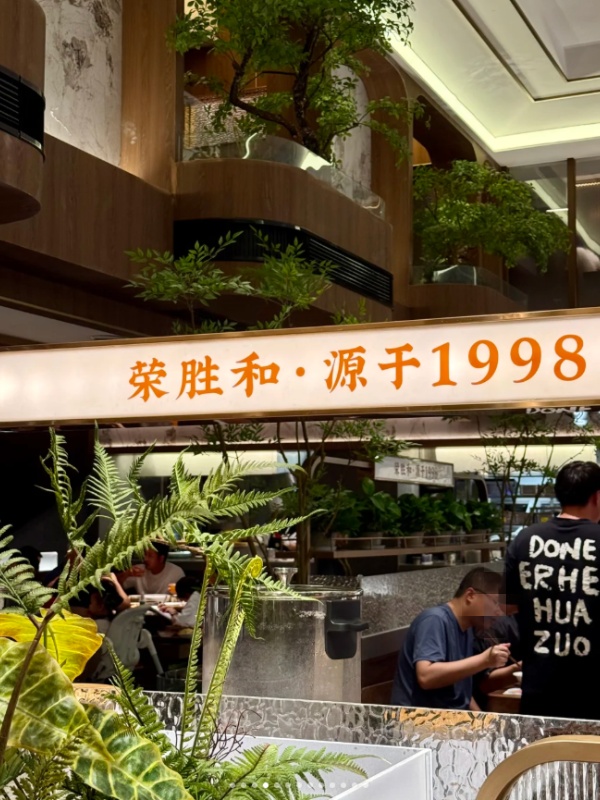
Rong Sheng He Fresh Hotpot
The Rong Sheng He Fresh Hotpot (荣胜和鲜货火锅) is located in Xipu at Hengshan South Street-away from the main tourist zones. Famous with locals for its food quality and word of mouth, it sits humbly outside popular interest. There is nothing sadder than a fish dish gone wrong about an hour after being served Ingredients here are bought just before dawn each day. Anyone who's interested in watching can take a look at the open kitchen counter where they are displayed. The ahem broth is complex Offering the subtle bite of mala — the perfect twist. Sichuan-sichuan, says King heese.
A hallmark recipe and eternal favourite with ingredients flown in from the mountains of Northern Sichuan. The sorghum spirit doesn't work for everyone. The fourth floor, just above the oil hotpot room, sits one of the best places to eat in town (for this small amount of money!). That’s where you can enjoy fresh sirloin slices time and time again freshly cut and boiled on the spot — satisfying in flavor, is more milky than anything else around. The thick yellow throat, as I hope you like it. Crunchy and rich. The fresh duck blood tastes good when it comes out as silk once cooked in the hotpot.
Staff are eager to give helpful advice on cooking times and provide attentive service at every turn of your meal. The atmosphere is down-to-Earth and banqueting. The food comes in big portions and is authentically flavored. It may not look like much, but once you've cooked it is greatly appreciated by everyone who knows what real Chengdu style tastes like. The range of cuisine spans far beyond their seafood. Diners love the rotation of Fresh Dish Specials that change every day. A great place for locals and tourists alike to eat at lunch or dinner, anytime of the day is right.
- Address: No. 32, Hengshan South Street, Pidu District, Chengdu
- Phone: 028 - 98765432
Youmingtang Fresh Fish Hotpot — Seafood Meets Sichuan Heat in High-Tech Zone ⭐️
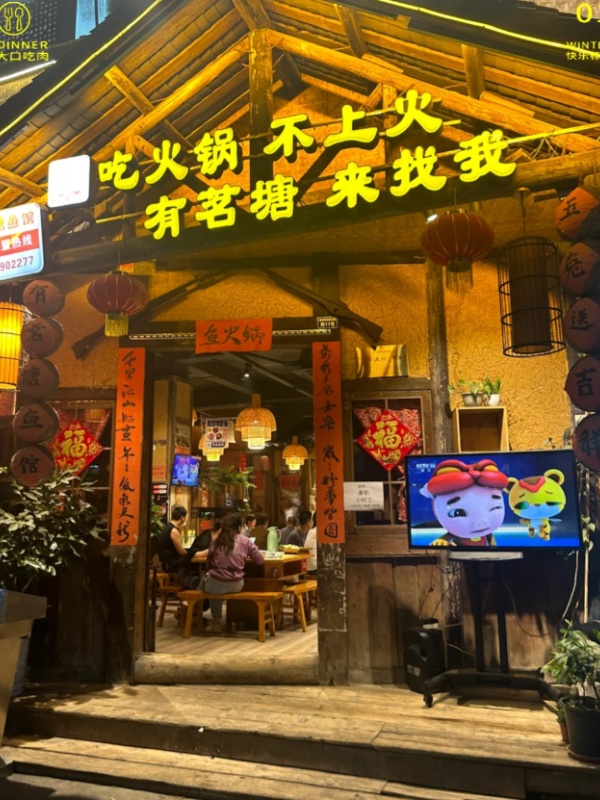
Youmingtang Fresh Fish Hotpot
The Youmingtang Fresh Fish Hotpot (有茗塘鲜鱼火锅) is located in the Chengdu High-Tech Zone (Zhonghe) and the taste of its hotpot--fresh fish with a difference--is popular. This restaurant offers a heaping serving of fashionable and also traditional hotpot dishes in addition to which gift small fruit rolls made by a local craftsperson. The key attraction is hotpot with a fish broth infused with green Sichuan pepper, making even those most tender bites of fish smell spicy.
The signature Suobian fish has tender, boneless flesh that soaks up every layer of the spiced, aromatic soup. Eat it with the green pepper broth, where every bubble bursts with the taste of a fresh citrusy peppercorn, and the crisp fried pork, savory and filling ¥80 per person.
Staff help with the texture of the fish and provide countermeasures between courses: each time a customer has some, they also give them pickled sour plum juice. Fans of Sun Yatsen's "Three Fish Hotpot Set Meal," rave about it for excellent value because the set includes fish, vegetarian side dishes, and refreshing drinks. For seafood buffs, this modern variant of Chengdu dining is light and directly to ones taste. People who do not eat fish are likely to find fewer choices, but for others that is part of the charm--it is extremely good at one thing.
- Address: No. 66, Kechuang Avenue, Gaoxin District, Chengdu
- Phone: 028 - 34567891
Hotpot is only the beginning — Discover Chengdu: Ultimate Food Tour for Sichuan Street Food Lovers takes you deeper into Chengdu’s street food world.
How to Order Hotpot Without Speaking Chinese
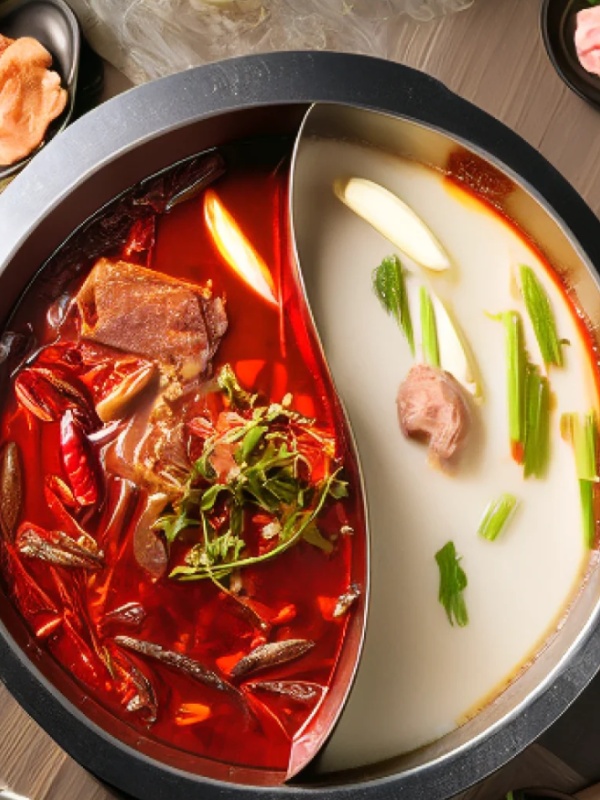
Yuan Yang pot
How to Choose the Right Restaurant
When you’re ready to pick a place, start with branches that are part of the landscape in well-traveled areas such as those dotted along Chunxi Road like Ba Shu Da Jiang or Kan Jian Lao Hotpot near Kuanzhai Alley; such restaurants have seen their share of foreign diners report employees are generally comfortable gesturing and speaking basic English for effect. Furthermore, locate a restaurant that makes Dianping’s “Must-Eat List”—or one with good local reviews—as these spots assure both fresher ingredients and more consistent service.
This is both a worthwhile tip for those concerned with bilingual service or first-time visitors to Chengdu. Look for an establishment labelled “Foreign-Friendly Service Certification”. Offered at locations like this are usually bilingual menus and staff that have been specifically trained. These restaurants are also easier to get to by subway or cab. Plan ahead and book a meal one or two days in advance through official channels. Add a comment like “I’m an outsider here” that makes it possible to get special attention.
Indispensable Tools for Easy Ordering
Photo Menus: Most big hotpot restaurants have pictures of their main dishes.
Translation Apps: Some possible phrases you could type in include “mild hot,” “medium spicy,” “extra spicy,” “half clear and half spicy,” or the name of specific ingredients, such as “beef” or “tripe.” Presenting these on your mobile will serve handily.
Pre-Saved Cards:Before you go there, save sentences like “I do not eat spicy food, give me clear soup!” and “How do I eat this dish?” and “Can you give some hot water?” in Chinese. When you show these to the staff, they will use the sentences pre-saved to help you with conversation without needing words.
The Ordering Process—Step by Step
Broth: You can always just point to “鸳鸯锅 (Yānyuān Guō)”—half spicy and half clear. It lets you control the spice level and avoid mistake.
Dishes: Choose the signature products from this guide, for example the fresh-cut beef at Ba Shu Da Jiang or cold pot duck blood in Kan Jian Lao Hotpot. Point at their pictures on the menu and say, “This one.”
Sauce: Ask for “sesame oil” (香油). The waitstaff will most likely mix it up with garlic and spring onion. Or, you can prepare your own blend at one of the many sauce counters everywhere, since all products are clearly labelled with pictures.
Help with Dining and Tips for Communication
If you aren’t sure how long a given item needs to cook, no problem. Just lift it towards your waiter and they’ll either handle it themselves or show and tell you how to proceed. In need of good service? Lift your hand ✋ while offering a friendly smile. Typically in Chengdu hotpot places this gesture—recognized by most servers as the international sign for service charge (of course you can always ask nicely too)—means they’ll quickly approach you. But that’s just a means to an end. Tarichaea, we’re here to enjoy this bubbling pot together!
Pro Tips & Etiquette for First-Timers
Choosing the Perfect Base – Finding Your Flavour
First-timers are best advised not to choose the hottest broths. for a more rounded experience? However, the quieter and cleaner half. In the matter of those half-sides, either the light side could be mushrooms or tomatoes; so delicious and silky. Non-spicy eaters can go for bone or mushroom broths which are soothing. Vegans should tell the waiter: “I’m vegan,” and then ask for an oil-free vegetarian broths containing no animal products. If you have allergies, ask for clear indications on the list of ingredients.
Ordering Smart — Balanced and Safe Choices
Before you make your order, tell your waiter if you have any allergies to fish, nuts, or soya. A properly run restaurant will give you the chance to look up on an ingredient chart. If you have not tried offal before, do not start off by eating tripe or the yellow mantle. You had better start with beef slices or chunks, shrimp paste or fish fillets. For two or three people, order one broth, three to four meats, two to three vegetables, and one staple. In a larger group, the “one to two meats per person” rule applies for ratio. Many restaurants have special starter platters or beginner packs now with favourite items such as seafood tofu.
Cooking and Dipping – Timing and Taste
The sequence: “first vegetables, later meats, fresh before frozen.” Vegetables and mushrooms absorb oil quickly, so use the clear part of the soup. Meat and seafood require only a brief cooking time to be tender. Dumplings and tofu frozen through need full boiling. Chewy offal like honeycomb tripe or duck intestine should be done according to the “seven up, eight down” principle: dip it 7-8 times, with each immersion taking about one second, till it curls. You can mix your sauces to taste - say some garlic-and-onion flavoured sesame oil for that Chengdou appeal; Or vinegar plus soy sauce to reduce the oiliness.
Eating Etiquette – Eat The Local Way
Use public chopsticks for handling raw food and personal ones for eating. Don’t stir the pot with your chopsticks. An important point is not to talk loudly, and also to avoid sticking chopsticks into the rice dish. If you need waiter service, simply raise your hand politely and say “fúwùyuán.” Give a small nod of thanks to all the staff. In a group, let adults or the host select the soup that everyone will share. Keep the table clean, thank your colleagues and get up from the table in a leisurely mood. Afterwards, have warm tea – not cold water – to help digestion.
Chengdu Hotpot versus Chaoshan Hotpot: Two Icons, Two Spirits
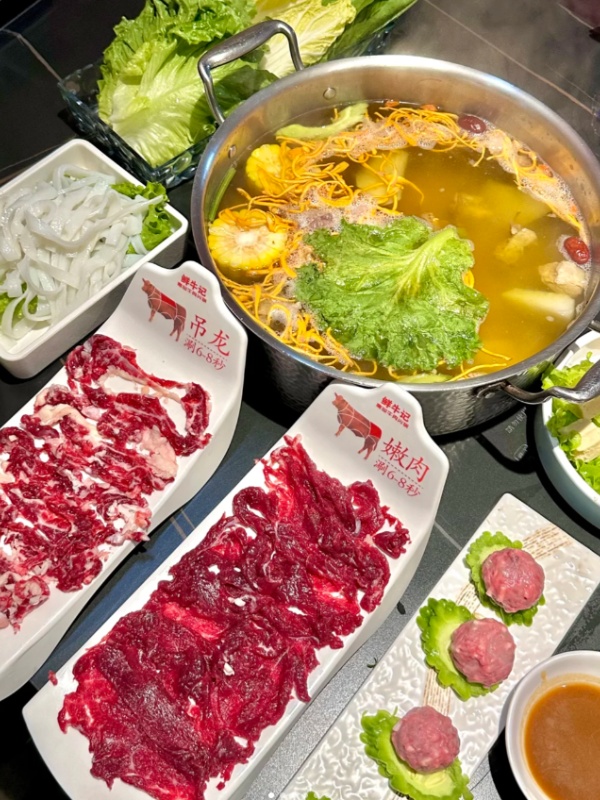
Chaoshan Hotpot
Broth Philosophy: Fire or Freshness--Which Sweeps You Away?
Visualize it. You're in Chengdu and the hotpot reaches the table. On the plate, the soup is red and blazing, a living thing, bubbles snapping, piece peppercorns leaping, chili oil airs multicolored. It is wild and full of life--just like the city. Imagine flying off to Chaoshan and immediately the pace slackens. Here the straightforward broth gently simmers slowly over dried fish and pork bones, in contrast to what rough-housing places from Chengdu. It does not shout; it talks quietly. The flavor is mild, natural, soothing to the spirit. Chengdu hotpot makes you sweat and laugh. Chaoshan hotpot makes you breathe advance more. Both are telling a story--one of fire, the other of tranquil Eurhythmy.
If Sichuan hotpot is passion, Chaoshan’s is precision. Read Chaoshan Beef Hotpot in China: A Guide to Cuts, Culture, and Cities to discover why locals swear by it.
Ingredient Ritual: Chaos Or Else Craftsmanship?
In Chengdu, nothing is waiting at the table. Whether beef tripe, duck intestines or lotus root, direct into boiling soup it goes. The fun is in the race--always hitting your timing of dip a bit early or late, trying to push temperature limits--the chase, simply divine. There's a daunt but also delight present at once. Chaoshan doesn't go that way. Here each beef slice has its own unique sounds. Locals know precisely when to pick it up as early as a few seconds before it hardens. You watch them at work, slicing meat thin as paper, no hurry, no confusion. Chengdu hotpot feels like a street concert; Chaoshan hotpot feels more like a violin solo.
Dining Vibe: Noise, Laughter, Or Else Zen?
Head on over to a Chengdu hotpot hall and you will hear people laughing long before tables come into view. Friends holler, glasses clink, and the air has an oasis of steam. Every second the table is pulsating life and sounds. But in Chaoshan, things happen more slowly. Chatter falls off. The focus moves to beef's texture, broth's clarity, each time rhythm of dipping and tasting. The Chengdu hotpot means connection by way of clutter. The Chaoshan hotpot means tranquility in precise statements. If you love being crazy and loud, Chengdu wins. If cool, coordinated beauty excites your passions instead, then Chaoshan will steal your heart.
Beyond Food: What These Two Teach You About China
Cross China, and you will find that food reflects people. The ability to be pure in its spice matches up with Chengdu s humour,formally redlined pace and life of love. The purity of Chaoshan 's modern clean mirror shows its old time lines respecting the craft. Visitors to both laugh together, saying they feel as though they are polar opposites--and yet in some odd way belong together. Chengdu give you warmth with chili and treacle. Chaoshan it's the tranquillity of still water reflected by their subtle way with both broth plus lonely table land. They are quite different, but they follow the same truth--every bite here has more than just flavour. It is China saying, "Sit down, take a breather, feel this moment."
FAQ About Chengdu Hotpot Restaurants
Q: Which Chengdu hotpot spots are most famous among locals?
Locals love Shu JiuXiang near Taikoo Li and Jincheng Impression for both flavor and atmosphere. If you want to blend in with Chengdu residents, try Long Sen Yuan or a Yulin branch — these spots stay lively even after midnight. Many Chengdu hotpot restaurants in these areas are known for their authentic Sichuan-style broth that perfectly balances spice and aroma. Locals say the late-night energy around these tables defines the city’s social life.
Q: Is there any difference between Chengdu hotpot and BBQ places?
Yes, quite a bit. Hotpot is all about boiling ingredients in broth, while Chengdu BBQ focuses on grilled skewers brushed with chili and cumin. Some restaurants even combine both under one roof, giving you the best of both worlds. If you’re exploring Chengdu hotpot restaurants, you’ll find a few that serve BBQ side dishes for a more rounded dining experience. It’s perfect for groups with different flavor preferences.
Q: Are there hotpot places recommended on Reddit or local apps?
Travelers often discuss Chengdu hotpot on Reddit threads like r/ChinaTravel. Locals usually rely on Dianping for real-time reviews and queue lengths. According to both, Xiao Long Kan and Ba Shu Da Jiang consistently top the charts for quality and spice. Some Reddit users even share hidden gems among Chengdu hotpot restaurants, mentioning smaller family-run venues with homemade broth. It’s worth checking both platforms before choosing where to go.
Q: Can foreigners pay with international cards or apps?
Most restaurants prefer Alipay or WeChat Pay, but a few tourist-friendly ones near Chunxi Road accept Visa or MasterCard. It’s safer to activate Alipay Tour Pass before arriving. Some Chengdu hotpot restaurants in major shopping areas even post signs showing accepted payment options for foreigners. Always confirm at the counter before ordering to avoid surprises.
Q: What is the average waiting time at popular spots?
In busy areas like Chunxi Road or Kuanzhai Alley, waiting can last from 30 minutes to 1.5 hours. Locals use Ctrip or Dianping to reserve ahead, or they arrive before 6:00 p.m. to beat the crowd. For Chengdu hotpot restaurants, weekends and holidays bring longer queues, especially for top-rated venues. The good news is that most places offer waiting snacks and tea to make the time enjoyable.
Q: Are there good hotpot spots near Wuhou Temple or Sichuan University?
Yes. Kan Jian Lao Hotpot near Wuhou Temple mixes Sichuan Opera shows with dining. Around Sichuan University, Yue Man Da Jiang is a student favorite with clear English menus and mild broth options. These Chengdu hotpot restaurants are ideal for first-time visitors who want both culture and comfort. The proximity to landmarks also makes them convenient for sightseeing itineraries.
Q: What makes Jincheng Impression unique?
This restaurant combines traditional hotpot with live Sichuan Opera. Performers change masks right beside diners. The experience blends sound, spice, and storytelling — perfect for first-time visitors. Few Chengdu hotpot restaurants offer this kind of theatrical immersion while maintaining authentic flavors. It’s an unforgettable mix of dinner and art that defines Chengdu’s charm.
Q: Is Long Sen Yuan really worth visiting?
It depends on what you’re after. Locals like it for its old-school flavor and affordable prices. Tourists often find it less polished but more authentic than chain brands. Many Chengdu hotpot restaurants try to replicate this rustic feel, but Long Sen Yuan keeps its vintage décor and old recipes. For a glimpse of local life, it’s a must-try stop.
Q: What’s the best late-night hotpot in Chengdu?
Head to Lao Ma Tou in Yulin District. It stays open until 4 a.m. and attracts chefs, taxi drivers, and artists — the true night scene of Chengdu. Among all Chengdu hotpot restaurants, this one captures the city’s after-hours spirit best. You can taste the smoky, peppery broth while the city slowly quiets outside.
Q: Any etiquette tips I should know before eating hotpot?
Use public chopsticks for raw items, don’t fish food from others’ sections, and keep your voice moderate. Locals say a calm table makes the broth taste better. Most Chengdu hotpot restaurants also expect diners to share space respectfully, especially in busy hours. Following local customs ensures a smoother, friendlier dining experience.
